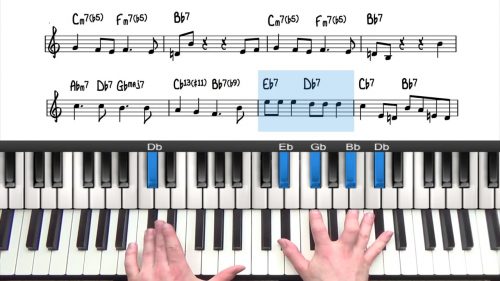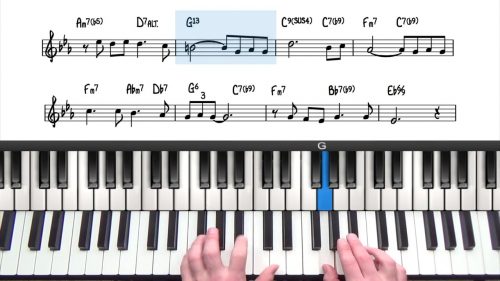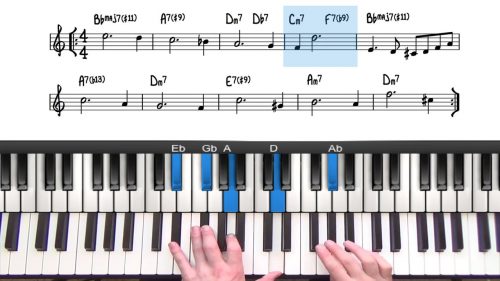How To Play Sus Chords
Welcome to this 5 minute masterclass on Sus chords, also known as suspended chords. This is a short overview lesson and you can find our full course on chord substitution here.
So what is a sus chord? Well I like to look at a sus chord as a slight variation on the regular dominant chord.
The Basic Sus Voicing
If we take a C7 chord in our left hand and move the major 3rd up a half step we are now playing C7sus. The 4th is said to be suspended which is why it is called C7sus4.
2 Handed Suspended Voicings
The easiest way to construct a C9sus is to play the root in our left hand, and a major triad off the b7 of the chord, for C7, the b7th would be Bb and so we play a Bb triad. This enriches the sound and we can also invert the triad shape in our right hand.
Extend To Become C13sus
To extend this chord to become a C13sus, we play a major 7th chord off the b7th which for C7 would be a Bbmaj7 in our right hand over C in the bass. Our right hand is now outlining the b7, 9, suspended 4th, and 13. Again we can invert the 7th chord to create different textures.
A final variation is to include the root at the top of the voicing. We can do this by playing a minor 7th chord off the 9th and playing root and b7 in our left hand. Another option is also to double the suspended 4th. This is a great choice of voicing when we have a dominant chord with the root in the melody.
Resolving The Suspension
An important point with sus chords is that we often resolve the suspended 4th to turn the chord into a regular dominant 7th voicing. This is best demonstrated in context of a 251 progression.
Now instead of going straight from G-7 to C7, we will add a C9sus in between. We can view the sus chord as temporary stepping stone between the 2 and the 5 chord. This can often be very subtle but also very effective at enhancing a simple 251 cadence.
Adding Chord Alterations
Another common technique is to add a chord alteration when moving from the sus to the regular dominant chord. The possible alterations over C7 would be b9, #9, #11, & #5/b13.
We explore a number of options including single alterations, double alterations, and upper structure triads.
Lesson Downloads
-
Sus Chords Lesson Notation File Type: pdf
Practice Tips
-
Play C7sus4, C9sus4, and C13sus4 and listen to the brightness of each of these chords.
-
As we add higher extensions the sound becomes more airy, floaty, and mysterious.
-
Examine the examples in the video and transpose the 7sus4, 9sus4 and 13sus4 in a few different keys.
-
The next step is to apply sus chords to 251 progressions. Instead of going straight from ii-7 to V7, use the V7sus chord as a 'temporary stepping stone'.
-
Apply single alterations, multiple alterations, and upper structure triads as demonstrated in the lesson.
-
Take your favourite tunes and apply the sus movement to every 251 that you come across.







